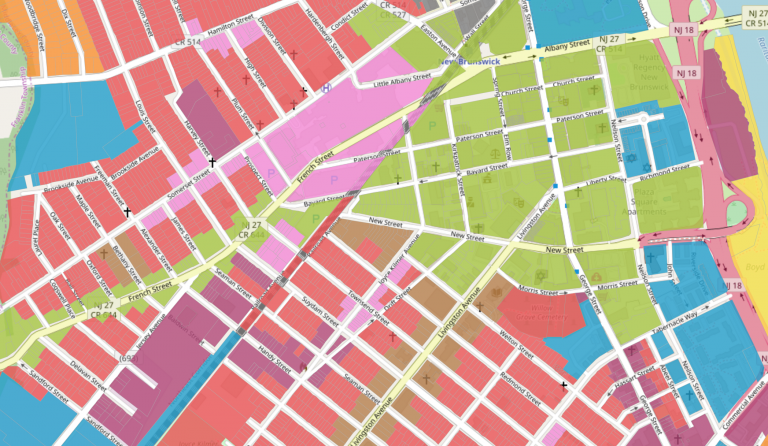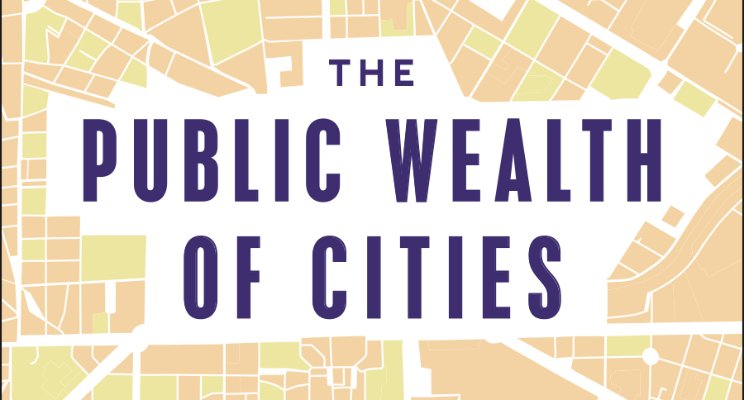Physical Address
304 North Cardinal St.
Dorchester Center, MA 02124
Physical Address
304 North Cardinal St.
Dorchester Center, MA 02124

In my regular discussions of U.S. zoning, I often hear a defense that goes something like this: “You may have concerns about zoning, but it sure is popular with the American people. After all, every state has approved of zoning and virtually every city in the country has implemented zoning.” One of two implications might be drawn from this defense of Euclidean zoning: First, perhaps conventional zoning critics are missing some redeeming benefit that obviates its many costs. Second, like it or not, we live in a democratic country and zoning as it exists today is evidently the will of the people and thus deserves your respect. The first possible interpretation is vague and unsatisfying. The second possible interpretation, however, is what I take to really be at the heart of this defense. After all, Americans love to make “love it or leave it” arguments when they’re in the temporary majority on a policy. But is Euclidean zoning actually popular? The evidence for any kind of mass support for zoning in the early days is surprisingly weak. Despite the revolutionary impact that zoning would have on how cities operate, many cities quietly adopted zoning through administrative means. Occasionally city councils would design and adopt zoning regimes on their own, but often they would simply authorize the local executive to establish and staff a zoning commission. Houston was among the only major U.S. city to put zoning to a public vote—a surefire way to gauge popularity, if it were there—and it was rejected in all five referendums. In the most recent referendum in 1995, low-income and minority residents voted overwhelmingly against zoning. Houston lacks zoning to this day. Meanwhile, the major proponents of early zoning programs in cities like New York and Chicago were business groups and elite philanthropists. Where votes were […]
Suburb: Planning Politics and the Public Interest is a scholarly book about planning politics in Montgomery County, a (mostly) affluent suburb of Washington, D.C. The book contains chapters on redevelopment of inner ring, transit-friendly areas such as Friendship Heights and Silver Spring, but also discusses outer suburbs and the county’s agricultural areas. From my perspective, the most interesting section of the book was the chapter on Friendship Heights and Bethesda, two inner-ring areas near subway stops. When landowners proposed to redevelop these areas, the planning staff actually downzoned them (p. 56)- and NIMBYs fought the planning board, arguing that even more downzoning was necessary to prevent unwelcome development. These downzoning decisions were based on the staff’s “transportation capacity analysis”- the idea that an area’s roads can only support X feet of additional development. For example, Hanson writes that Friendship Heights “could support only 1.6 million square feet of additional development.” (p. 62). Similarly, he writes that Bethesda’s “roads and transit could handle only 12 million square feet of new development at an acceptable level of service.” (p. 75) Thus, planning staff artificially limited development based on “level of service “(LOS) . “Level of service” is a concept used to grade automobile traffic; where traffic is free-flowing the LOS is A. But the idea that development is inappropriate in low-LOS places seems a bit inconsistent with my experience. Bethesda and Friendship Heights zip codes have about 5000-10,000 people per square mile; many places with far more density seem to function adequately. For example, Kew Gardens Hills in central Queens has 27,000 people per square mile, relies on bus service, and yet seems to be a moderately popular area. Moreover, the use of LOS to cap density has a variety of other negative effects. First, places with free-flowing traffic tend to be dangerous for […]

The Public Wealth of Cities by Dag Detter and Stefan Fölster proposes a series of reforms to improve municipal finances. The authors lay out guidelines for creating urban wealth funds (UWFs) and argue that financial stability is key to societal success. Detter and Fölster first call for basic financial competency. According to the authors, most cities don’t even know what they actually own. Real estate and equipment are often owned directly by individual departments with no central record to provide a bird’s eye view of a city’s assets as a whole. When this is the case, good asset management becomes impossible because no one knows what they’re managing. The authors also point out the need for cities to decide what is and is not a commercial asset. Where administrators designate an asset as commercial, maximizing ROI should supersede all other objectives. That doesn’t mean everything a city owns has to be managed to turn a profit, but where a piece of real estate or a facility is meant generate income, it ought to be managed explicitly to that end. Professional financial planning is Detter and Fölster’s third major prescription. They argue that cities should hire professional asset managers to oversee their portfolios and that these managers should be shielded from the democratic process. They go on to make a very public choice argument that elected officials have inappropriately short time horizons and that pressure to please constituents can lead to decisions at odds with the long term sustainability of municipal finances. After developing that line of reasoning, they provide Singapore as an example of a municipality that does this pretty well. In terms of the ideas presented, I loved the book. It touches on the organizational challenges of getting municipal finance right while speaking to what execution has […]

During an urbanist twitter free-for-all last week, the thoroughly awesome term “liberty machines” was used to describe the virtues of the car. The claim was made that cars let individuals go wherever they want, whenever they want and are therefore a ‘freedom enhancing’ form of transit. This isn’t the first time I’ve heard this argument in libertarian(ish) circles. But it doesn’t tally with my experience and I’m not sure it makes any sense even within its own premise. A Personal Anecdote and a Couple Thoughts When I learned to drive way back when, it was in the great state of Texas where driving is basically a necessity. In that context, getting my license (and being economically fortunate enough to have access to a car) was certainly liberating for me after a fashion. Thinking back, though, I enjoyed far less mobility as a car bound teenager in suburban Houston than I do now living in Oakland, California. I walk to the grocery, take BART to work, bike to the gym, catch a Lyft to go out, and/or drive myself when the occasion demands. Most of my trips are multimodal and the integration of transit modes affords me far more freedom of movement than car use alone ever could. The biggest reason for this is that single occupancy vehicle use doesn’t scale as a stand alone system. Unpriced roadways are prone to hitting congestion points and, as readers of this blog are probably aware, adding lanes doesn’t help. When roads become clogged, and there are no viable alternatives, a reliance on cars becomes a constraint. And to respond to the idea that mass transit relies on government subsidies and car use does not…the technical term for that would be factually incorrect. Mass transit is more than capable of paying for itself and let’s just say highways don’t […]

The adoption of zoning as a means of preventing external costs led to inefficient use of land and caused many individuals to suffer great unfairness.
I recently read a highly publicized pro-NIMBY book, Vanishing New York. The author, who goes by the pen name “Jeremiah Moss” tells a simple story: throughout New York, gentrification and chain stores are on the march, making the city rich and boring. The story has an element of truth: obviously, there are some places that have gentrified, and there are some places (mostly notably Times Square) that have lots and lots of banks and chain stores. But on balance, the book’s relationship with factual reality is a bit uneven. Much of the book complains about the evils of gentrification. But in fact, even in Manhattan the poverty rate is 17.9 percent, about three times that of most New York suburbs. Moss also claims that the city is getting whiter, but even Manhattan is 40 percent black and Hispanic, and New York City as a whole is 54 percent black and Hispanic. By contrast, in 1980 the city was only 45 percent black/Hispanic, and in 1940 it was over 90 percent white. Moss seems to think that the city is being taken over by chain stores. The last time I walked through the East Village (one of the neighborhoods he writes about) I found about one or two such stores per block, or about 5 or 10 percent of all storefronts. My guess is that Moss thinks about chain stores the way many racists think about racial minorities: because they assume one is too many, 5 percent seems to them like a takeover. Moss is all for immigration from foreign nations, but constantly complains about newcomers, especially parents; he uses the word “stroller” like anti-Semites use the term “international bankers”- as a code-word for a dreaded enemy. He has a problem with college students too (complaining about “NYU’s presence… [having] spread […]

Subsidies to transportation tend to lengthen supply and distribution chains. Large corporations are artificially competitive against smaller, local firms.
Why is the rent so damn high? And why does it take hours to commute from cheap, plentiful housing to modern economy jobs? If you are living in a big city in America, you likely face this problem. And it isn’t just an American problem: From Ireland to New Zealand to The Philippines, the rent/commuting crisis is hitting the 21st century hard, right in the big cities where most of the economic growth is coming from, and where most of the jobs are. Meanwhile, in the economically blighted regions of America, everything seems to be falling apart, with lead in the tap water, crumbling roads, and municipal bankruptcy for thousands of towns and cities a very real possibility. But it doesn’t have to be this way. There are a few cities that seem to have figured out how to match a futuristic tech economy with futuristic transit and housing for the masses. And there are many small towns around the world that don’t face insurmountable backlogs of infrastructure repairs. What are they doing different? Why is the price per square foot for living space in Tokyo a third of what it is in Boston or San Francisco? Both cities have similar incomes and geographic constraints. Why is it an enormous scandal in Japan when trains leave a few seconds off schedule, while in America it is normal for your bus or train to be an hour late or never show up at all? Chalking this up to cultural differences is an easy explanation, and may have some weight, but I submit that the underlying laws of human economics do not vary based on culture, and there is much that we can learn from looking abroad. For Americans, the story begins in the nineteenth century when most of the country’s infrastructure […]
by Samuel R Staley Before the twentieth century land-use and housing disputes were largely dealt with through courts using the common-law principle of nuisance. In essence if your neighbor put a building, factory, or house on his property in a way that created a measurable and tangible harm, courts could intervene on behalf of a complainant to force compensation or stop the action. This pro-property rights approach maximized liberty and minimized the ability of citizens and elected officials to politicize the development process. This changed with the Progressive movement. Beginning in the late nineteenth century, Progressives argued that government should become more professional. Rather than being limited, government should use its resources to pursue the “public interest,” loosely defined as whatever the general public decided through democratic processes was the proper scope of government. Legislatures and, by extension, city commissions made up of elected citizens would set policy and goals while a cadre of trained professionals would use the techniques of scientific management to implement policies. One of the leading Progressives of the day, Woodrow Wilson, was skeptical of the value of elected bodies such as Congress because they interfered with scientific management of government. While many in the twenty-first century might be tempted to dismiss this public-interest view of government—indeed an entire academic subdiscipline, Public Choice, has emerged to demonstrate the foibles of governments and explore “government failure”—Progressive ideas held a lot of appeal at the turn of the twentieth century. In addition to national concerns over industries such as oil, steel, and railroads, local governments were rife with corruption, waste, and inefficiency. Reforms, such as the city-manager form of government, civil-service exams, and in some cases even municipal ownership of utilities, were thought to provide more transparency and accountability than the patronage-laden times of political bosses. (Today municipal […]

At 4:30 am, alarms on my cellphone and tablet start beeping, just enough out of sync to prompt me to get up and turn them off. By 5:00 am, I riding as a passenger along an unusually sedate New Jersey Turnpike, making friendly conversation with my driver and survey partner to make sure he stays awake. At 5:30am, as most of the city sleeps, we find a drab concrete picnic table outside the bus depot and chow down on our cold, prepared breakfasts. Around us, buses are revving up and their drivers are chatting and smoking cigarettes. At 5:50 am, we find our bus and introduce ourselves to our driver for the day. All of the Alliance drivers seem to be Hispanic. Our run begins. You wouldn’t expect it, but the first run is always the sweetest. The riders trickle on, making it easy to approach them, and unlike the typical 8:00 am rush hour rider they are usually friendly and receptive to my request. I approach them and mechanically incant “Good morning Sir/Ma’am. Would you like to take a survey on your commute today for NJ Transit? It will only take a few minutes of your time.” My partner sits in the front, tallying the boardings, exits, and survey refusals. We will spend the next eight hours zigzagging across the New York City metropolitan area, asking harried riders about their commute. For the past month or so, this has been my part-time job: surveying bus riders about their origins, destinations, and travel preferences for NJ Transit. The job is just engaging enough that I rarely have time for sleeping or class readings, but has enough slow periods that my mind can wander on the question of bus planning. Although I am not authorized to read any of the surveys […]